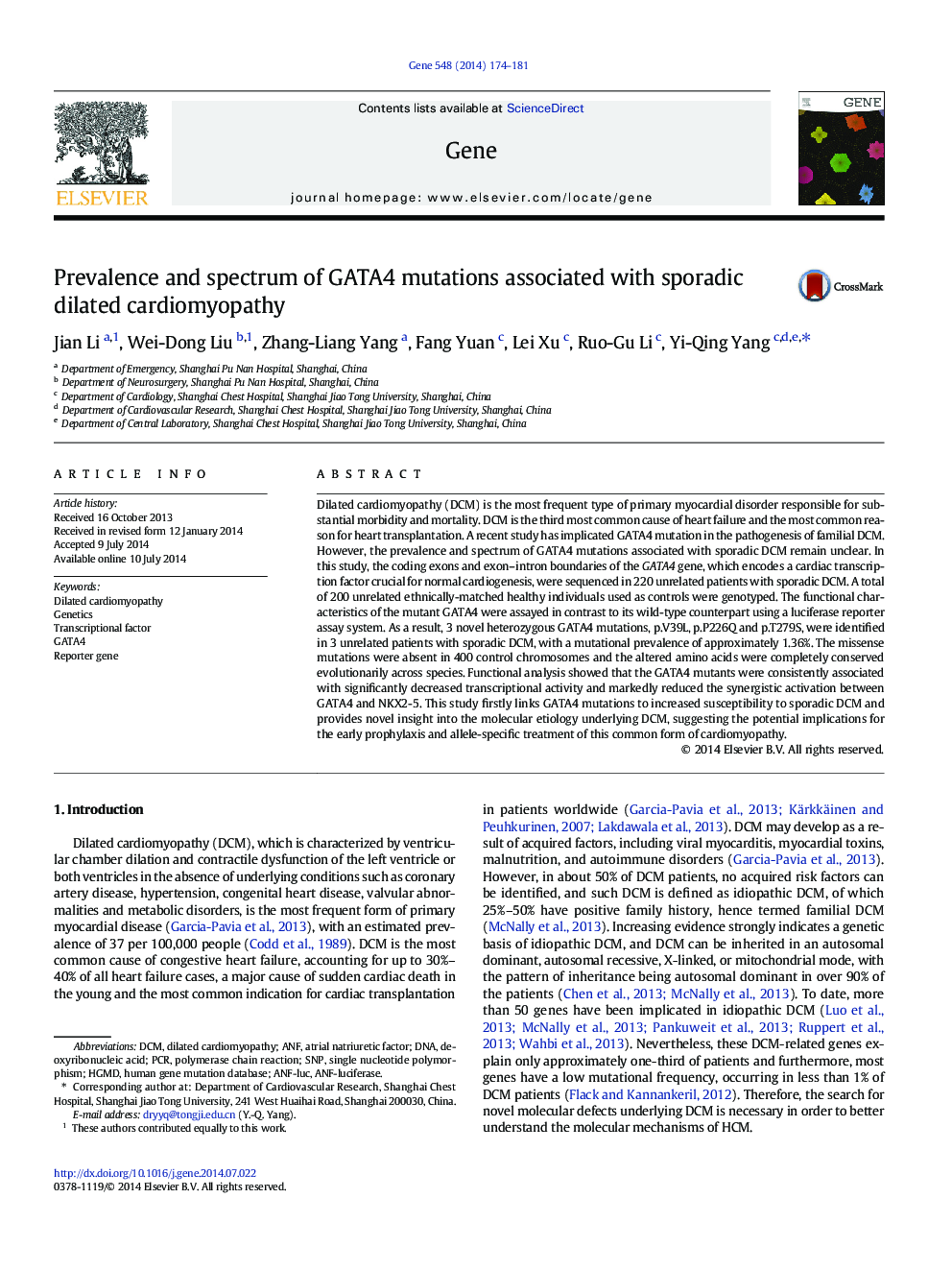| Article ID | Journal | Published Year | Pages | File Type |
|---|---|---|---|---|
| 2816200 | Gene | 2014 | 8 Pages |
•Three novel GATA4 mutations were identified in 3 unrelated patients with DCM.•The mutations were absent in 200 controls.•The altered amino acids were completely conserved evolutionarily among species.•The mutants were associated with significantly reduced transcriptional activity.•The mutations decreased the synergistic activation between GATA4 and NKX2-5.
Dilated cardiomyopathy (DCM) is the most frequent type of primary myocardial disorder responsible for substantial morbidity and mortality. DCM is the third most common cause of heart failure and the most common reason for heart transplantation. A recent study has implicated GATA4 mutation in the pathogenesis of familial DCM. However, the prevalence and spectrum of GATA4 mutations associated with sporadic DCM remain unclear. In this study, the coding exons and exon–intron boundaries of the GATA4 gene, which encodes a cardiac transcription factor crucial for normal cardiogenesis, were sequenced in 220 unrelated patients with sporadic DCM. A total of 200 unrelated ethnically-matched healthy individuals used as controls were genotyped. The functional characteristics of the mutant GATA4 were assayed in contrast to its wild-type counterpart using a luciferase reporter assay system. As a result, 3 novel heterozygous GATA4 mutations, p.V39L, p.P226Q and p.T279S, were identified in 3 unrelated patients with sporadic DCM, with a mutational prevalence of approximately 1.36%. The missense mutations were absent in 400 control chromosomes and the altered amino acids were completely conserved evolutionarily across species. Functional analysis showed that the GATA4 mutants were consistently associated with significantly decreased transcriptional activity and markedly reduced the synergistic activation between GATA4 and NKX2-5. This study firstly links GATA4 mutations to increased susceptibility to sporadic DCM and provides novel insight into the molecular etiology underlying DCM, suggesting the potential implications for the early prophylaxis and allele-specific treatment of this common form of cardiomyopathy.
